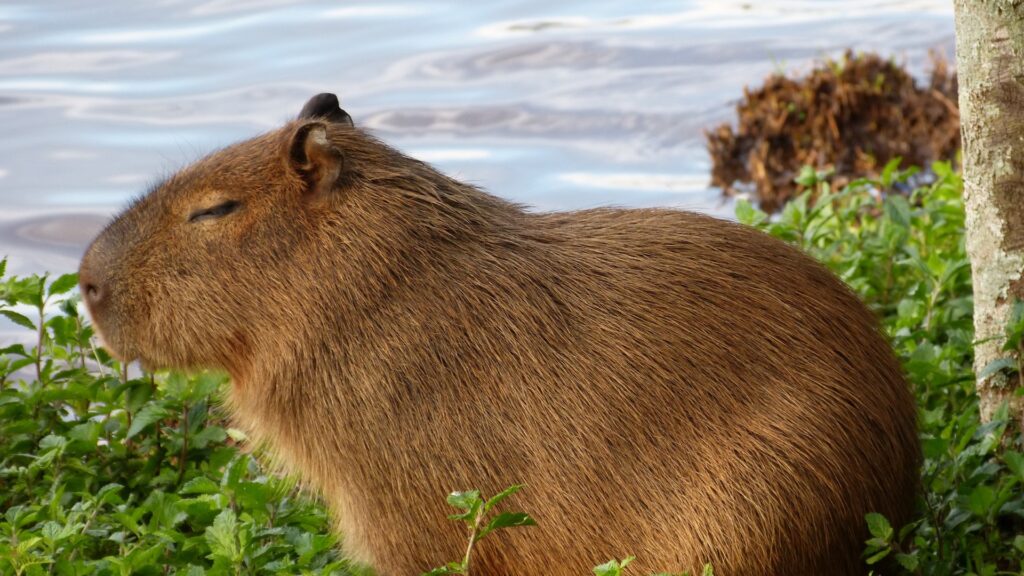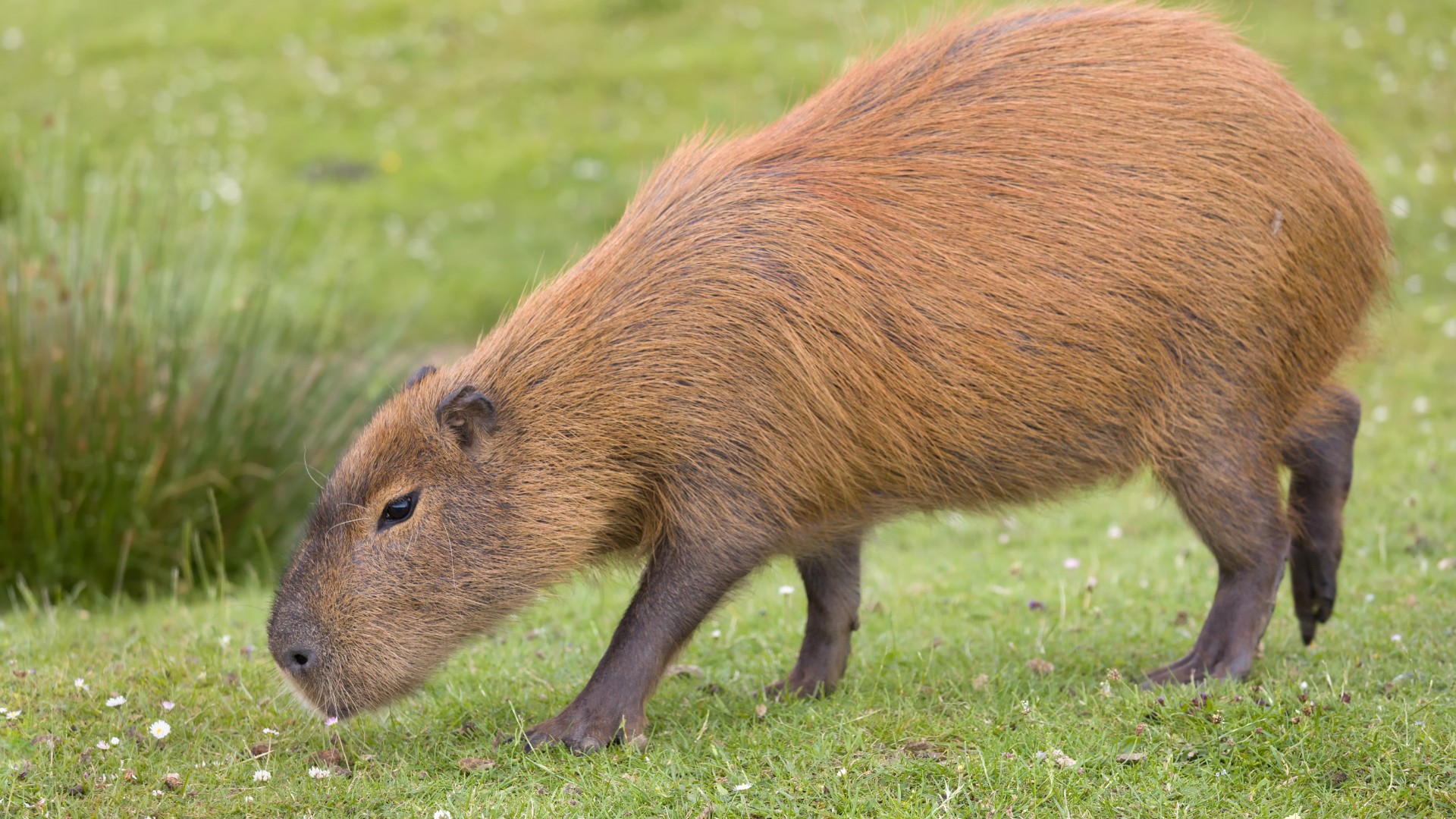The capybara, known as the world’s largest rodent, is a fascinating creature native to Central and South America. These semi-aquatic mammals are highly social, living in large groups and inhabiting a variety of habitats from swamps and marshes to dense forests and grassy plains. However, their populations are subject to various threats, including habitat loss, hunting, and human activities. In this article, we will delve into the current population status of capybaras, their habitat and diet, the threats they face, and the ongoing conservation efforts to protect them.
Contents
Population and Distribution
Capybaras are found throughout a wide range of habitats in Central and South America, including countries such as Panama, Colombia, Venezuela, Peru, Brazil, Paraguay, and parts of Argentina and Uruguay.
Current Population Status
Despite facing several threats, the overall population of capybaras remains relatively stable across much of their natural range. The International Union for Conservation of Nature (IUCN) lists the greater capybara as of “Least Concern” on its Red List of Threatened Species. However, population densities can vary significantly depending on management practices and habitat quality.
Population Densities and Group Sizes
Capybaras are highly social animals and often live in groups that can range from 10 to 100 individuals. During the dry season, these groups can become even larger as they gather around available water sources. Typically, a group consists of a dominant male, several females, subordinate males, and their young.
Habitat and Diet

Habitat
Capybaras inhabit areas with dense vegetation close to freshwater sources such as rivers, lakes, ponds, and swamps. They are semi-aquatic, spending much of their time in or near water, which helps them regulate their body temperature and escape predators.
Diet
These herbivores feed on a variety of plants, including grasses, aquatic plants, and during dry seasons, they also consume reeds, grains, melons, and squashes. An adult capybara can eat up to 6 to 8 pounds of grass per day. Interestingly, they also engage in coprophagy, eating their own feces to obtain beneficial bacteria that aid in digesting the high fiber content of their diet.
Threats to Capybara Populations
Despite their stable population status, capybaras face several significant threats.
Natural Predators
In the wild, capybaras are preyed upon by jaguars, caimans, anacondas, ocelots, and harpy eagles. Their young are particularly vulnerable to these predators.
Human Activities
Hunting and Poaching
Capybaras are hunted extensively for their meat and hide, which can be made into leather. In some regions, they are also farmed, which can relieve pressure on wild populations but also introduces new management challenges.
Habitat Loss and Deforestation
Deforestation and land clearance for agriculture are major threats to capybara habitats. As their natural habitats are destroyed, capybaras are forced to venture into crop fields, where they can cause significant damage and are often seen as pests.
Pollution and Human Settlement
Increasing human settlements and pollution in water sources also pose significant threats to capybara populations. These changes can reduce the availability of food and safe habitats, further endangering the species[3][4].
Also Read: Bizarre Animal Behaviors You Won’t Believe Exist
Conservation Efforts

Protective Measures
While capybaras are not currently classified as endangered, several measures are in place to protect their populations and habitats.
Habitat Protection
Efforts to protect wetland habitats are crucial for capybara survival. In some areas, capybara farming has helped ensure the preservation of these habitats, as it provides an economic incentive for landowners to maintain the natural environment.
Regulation of Hunting
Regulations on hunting and poaching are essential to prevent overexploitation of capybara populations. Monitoring and enforcement of these regulations are critical to maintaining stable population numbers.
Research and Awareness
Continuous research on capybara behavior, habitat needs, and population dynamics helps inform conservation strategies. Raising awareness about the importance of preserving capybara habitats and the threats they face is also vital for garnering public support for conservation efforts.
Social Structure and Reproduction
Understanding the social structure and reproductive habits of capybaras is important for effective conservation.
Social Structure
Capybaras live in complex social groups with a dominant male, several females, and subordinate males. These groups are highly cooperative, with adults keeping watch for predators and ensuring the safety of the young.
Reproduction
Breeding in capybaras can occur year-round, but it peaks during the wet season. After a gestation period of about 5 to 6 months, females give birth to litters of up to 8 pups. The young are well-developed at birth and can swim, run, and dive within hours. They begin eating grass within a week but continue to suckle until they are about four months old.
Conclusion
The capybara, despite being the world’s largest rodent, faces numerous challenges in the wild. While their overall population remains stable, localized threats such as habitat loss, hunting, and pollution can significantly impact their numbers. Conservation efforts, including habitat protection, regulation of hunting, and public awareness campaigns, are crucial for ensuring the long-term survival of this unique species.
Also Read: Night Life: Animals That Thrive in the Dark
